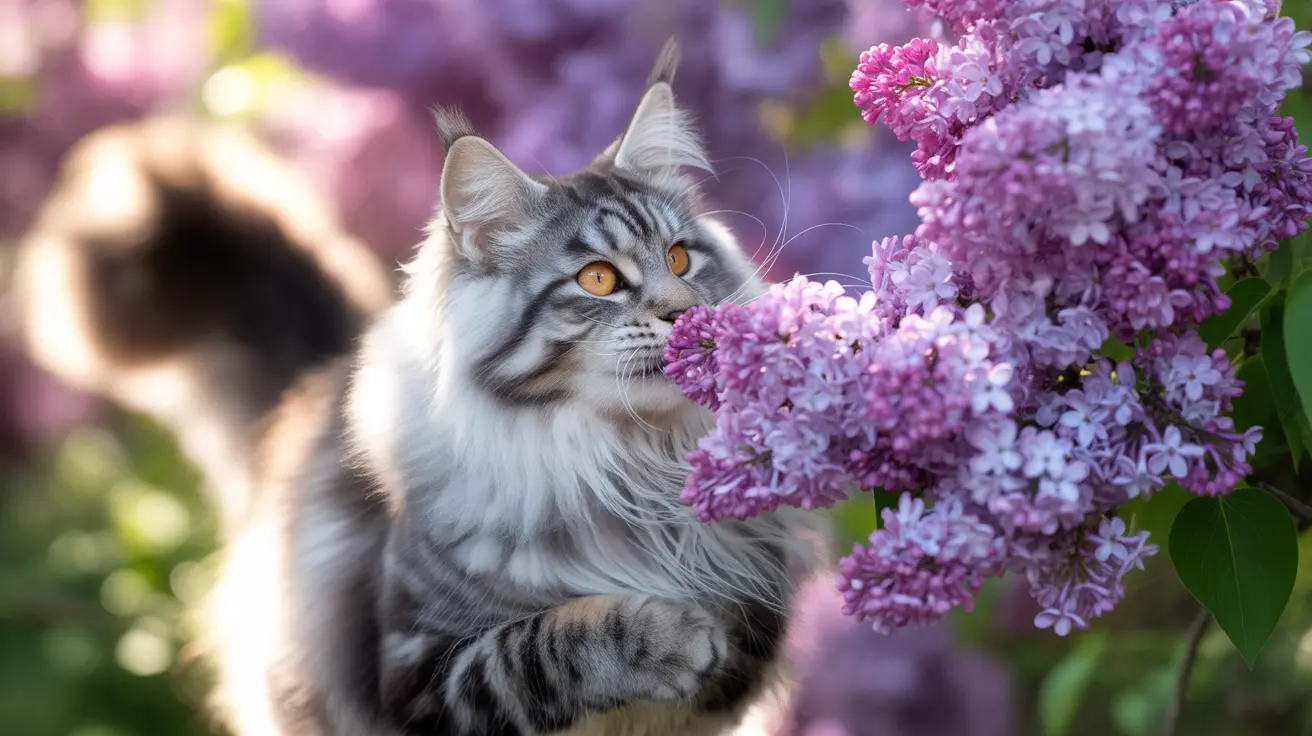As a cat owner, you want to ensure your home and garden are safe spaces for your feline friend. When it comes to lilacs, there's often confusion about their safety for cats. Let's clear up the misconceptions and provide you with accurate information about different types of lilacs and their potential effects on your cat's health.
Understanding the distinction between common lilacs and other plants that share the "lilac" name is crucial for keeping your pets safe. This comprehensive guide will help you identify which lilacs are safe and which ones could pose a threat to your furry companion.
Common Lilacs and Cat Safety
True lilacs (Syringa vulgaris) are generally safe for cats. The ASPCA has officially listed common lilacs as non-toxic to both cats and dogs. These fragrant shrubs can be safely kept in your garden or brought inside as cut flowers without risking your cat's health.
While common lilacs won't cause serious harm, cats who nibble on large amounts of lilac plant material might experience mild digestive upset. These symptoms typically resolve on their own without requiring veterinary intervention.
The Persian Lilac Danger: What Cat Owners Need to Know
Persian lilac (Melia azedarach), despite its name, is not actually related to true lilacs and poses significant risks to cats. This plant contains toxic compounds that can cause severe symptoms if ingested, including:
- Severe gastrointestinal distress
- Muscle weakness
- Seizures
- Difficulty breathing
- Potential organ damage
If you suspect your cat has consumed any part of a Persian lilac plant, immediate veterinary attention is crucial, as symptoms may not appear for several days after ingestion.
How to Identify Safe vs. Toxic Lilacs
Common Lilac Characteristics
- Tall shrubs reaching up to 20 feet
- Strong, sweet fragrance
- Large clusters of purple, pink, or white flowers
- Rough, gray-brown bark
- Heart-shaped leaves
Persian Lilac Features
- Shorter growth (typically around 10 feet)
- Lighter colored, smaller flowers
- Different leaf pattern and structure
- Berry-like fruits (extremely toxic)
Creating a Cat-Safe Garden Environment
When planning your garden with cats in mind, consider these safety measures:
- Verify plant species before purchasing
- Keep a record of all plants in your garden
- Remove any toxic varieties immediately
- Consider creating an enclosed "catio" space
- Monitor your cat's outdoor activities
Frequently Asked Questions
Are common lilacs (Syringa vulgaris) safe for cats to be around or nibble on?
Yes, common lilacs are safe for cats. While excessive consumption might cause mild stomach upset, these plants are not toxic and won't cause serious harm to your cat.
What are the symptoms if a cat ingests poisonous Persian lilac (Melia azedarach)?
Symptoms include vomiting, diarrhea, weakness, tremors, seizures, and breathing difficulties. These symptoms may take 3-4 days to appear, making immediate veterinary care crucial if ingestion is suspected.
How can I tell the difference between a safe common lilac and toxic Persian lilac in my garden?
Common lilacs are taller shrubs with larger, more fragrant flower clusters and heart-shaped leaves. Persian lilacs are shorter, have smaller flowers, and produce berry-like fruits. When in doubt, consult a gardening expert or botanist.
What should I do if my cat eats part of a Persian lilac or shows signs of poisoning?
Contact your veterinarian immediately or call the ASPCA Animal Poison Control Center (888-426-4435). Don't wait for symptoms to appear, as delayed treatment could be dangerous.
Can lilac-scented products or essential oils be harmful to cats even if the plants are safe?
Yes, lilac-scented products and essential oils can be harmful to cats regardless of the safety of natural lilac plants. These products often contain concentrated compounds or additional ingredients that may be toxic to cats.
Conclusion
While common lilacs are safe for cats, it's essential to be vigilant about identifying and removing any Persian lilacs from your environment. When in doubt about any plant's safety, consult with your veterinarian or the ASPCA's toxic plant database. Creating a safe environment for your cat doesn't mean you have to give up on having beautiful flowers – it just requires careful planning and awareness.






